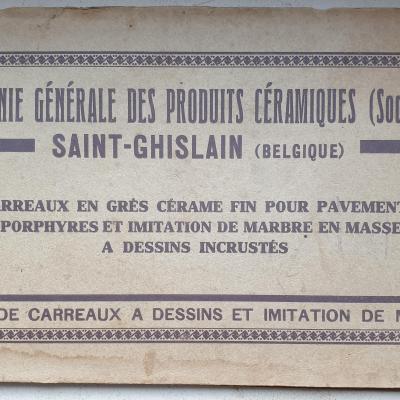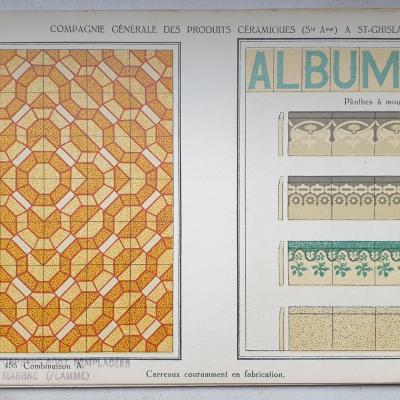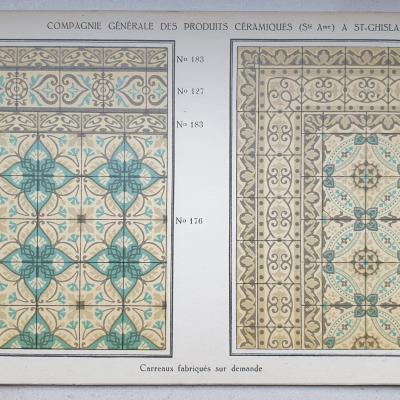A small, 4.7m2 Belgian ceramic floor with its original borders - 1933
Manufactured by Compagnie Generale des Produits Ceramique SAINT GHISLAIN, Belgique in 1933 a small reclaimed, and now fully restored, ceramic encaustic floor with its original full size and half size borders.
Totalling 4.7m2/ 51 sq ft. we include in the photo gallery, along with high resolution photographs of a randomly selected 1.2m2 section of the the floor, a scan from the original Saint Ghislain catalogue presenting the floor in 1933.
The border corner tiles for both the large and small corners will need to be mitre cut by the tiler from the regular borders.
The main field tiles and large border tiles are 14.2cm sq and the small borders 14cm x 7cm.
The palette is cool; mid greys, sky blue on off-white with charcoal piping, the floors motif opens out in a four tile tessellation. The tiles have cleaned well, the ceramic is dense and the slip colours consistent. A tile fired to over 1,100F they can be laid inside or outside of the home and, as excellent retainers of heat, can be used with underfloor heating systems. The floor will not require sealing once laid, a regular wash being all that is required to maintain their beauty.
Tile quantities give or take one or two:-
FIELD – 143 tiles – 2.8m2 / 30.1 sq ft.
LARGE BORDERS - 51 tiles plus 2 corners - 1.0m2 / 10.9 sq ft or 7.1 linear metres / 23.3 linear feet
SMALL BORDERS – 85 tiles - 0.9 m2 / 9.7 sq ft or 12 linear metres / 39.4 linear feet
NOTE
Antique tiles were most commonly made in single or two tile moulds. Before current computer automation methods their moulds were made my hand and the colour slips mixed by eye. Kiln temperatures could also be variable, as could the firing time. The result is that often tiles display subtle size and thickness variations and there can be tonal variations in colours, owing to the slip mixing and/or firing time. All of this makes these handmade tiles unique and adds to their charm. Some floors display their subtle variations in size and tones, some not, but when photographing we always take a random section of the floor so that it is representative of the whole. A tiler should always dry lay a section of the tiles to familiarise himself with them before starting to fix lay.
CL176







